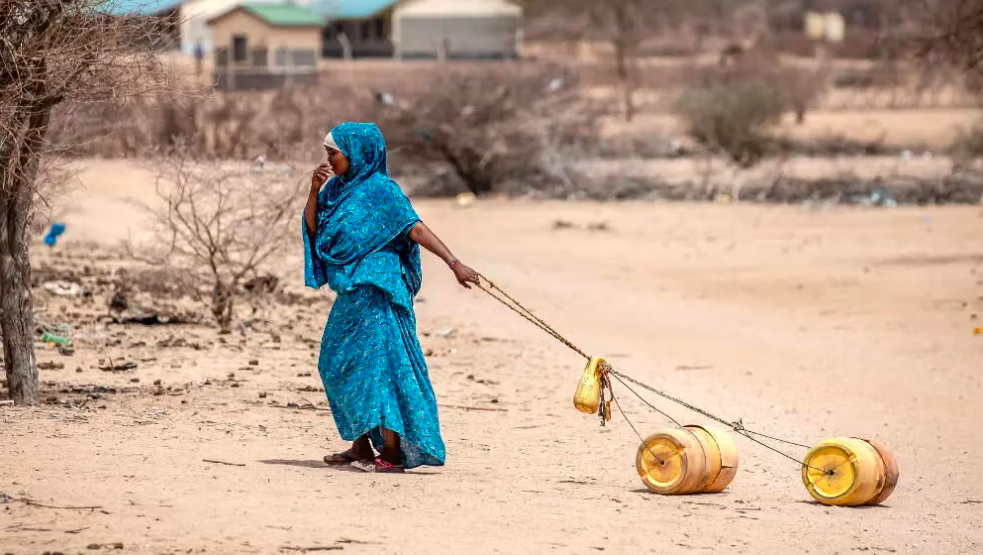
 Icpac said there is a 55 per cent probability that the entire of central and eastern Kenya will be drier than average.
Icpac said there is a 55 per cent probability that the entire of central and eastern Kenya will be drier than average.The rains will also come late.
The latest forecast from the IGAD Climate Prediction and Applications Centre (ICPAC) shows that most parts of eastern and northern Kenya will likely be drier and hotter than normal, while western regions may see more favourable rains.
The October to December period (also known as the short rains season) contributes up to 70 per cent of annual rainfall in some areas, making it critical for food production.
The technical statement released at the 71st Greater Horn of Africa Climate Outlook Forum in Nairobi said there is a 55 per cent probability that the entire of central and eastern Kenya will be drier than average.
“Analysis of predictions from seven Global Producing Centres, tailored for the region, indicates an elevated likelihood of below-normal rainfall in OND 2025 across … eastern Kenya,” Icpac said.
The forecast matches the World Meteorological Organization (WMO) warning that a weak La Niña pattern is expected to bring reduced rainfall to the Greater Horn of Africa.
The WMO also said a negative Indian Ocean Dipole (IOD), which typically leads to depressed rainfall over Eastern Africa, including Kenya, during the October to December short rains season, is developing.
“Overall, the SON (September-November) 2025 rainfall outlook reflects a La Niña-influenced pattern, with suppressed rainfall over the central and eastern Pacific,” WMO said on Monday.
ICPAC’s forecast said counties in western Kenya have a high likelihood of exceeding 300 millimetres of rain but those in northern and eastern Kenya have a less than 30 per cent chance of surpassing this threshold.
The seasonal forecast also points to delayed onset over eastern and central Kenya while western Kenya will see an early to normal onset of the rains. This difference is important because delayed rains often disrupt planting schedules, forcing farmers to either wait longer or risk sowing in dry soil.
The forecast also warned Kenyans should expected higher than usual temperatures. “Probabilities of warmer-than-average temperatures are highest over eastern parts of Kenya,” the Icpac said.
Its experts said these hotter conditions are likely to
worsen the effects of reduced rainfall, putting pressure on crops, livestock,
and water supplies. However, some relief may come for farmers in the
cross-border areas of north-western Kenya, such a Turkana, where cooler or
near-average conditions are predicted.
Still, the forecasters cautioned that conditions may vary within the season. “While drier than usual seasonal-average conditions are most probable in eastern parts of the Greater Horn of Africa regions that usually receive rain in the OND (October-November-December) season, transient wet spells may occur,” Icpac said. This means short periods of rain could still appear even in areas with a strong dry signal, while some wet areas might also see dry weeks.
Environment Cabinet Secretary Deborah Barasa promised the government would keep supporting climate resilience efforts. “Bridging the early warning gap requires shared knowledge, timely information, and a united regional approach. Kenya remains committed to supporting regional frameworks that strengthen climate resilience across our communities,” she said.
Edward Muriuki, acting director of the Kenya Meteorological Department, which hosted the Nairobi forum, said they will continue updating Kenyans as the season progresses. “Early warning systems save lives only when they reach everyone, including the most vulnerable. At KMD, we remain committed to providing accurate and timely climate services that support communities to plan, adapt, and build resilience,” he said.
The Nairobi-based Icpac covers Kenya, Burundi, Djibouti, Eritrea, Ethiopia, Rwanda, Somalia, South Sudan, Sudan, Tanzania, and Uganda. It is a programme of the Intergovernmental Authority on Development (IGAD), a regional body for the Horn of Africa countries.
IGAD Deputy Executive Secretary Mohamed Ware called for urgent preparation to manage the risks. “The Greater Horn of Africa is at the frontline of the climate crisis. Climate information must reach the last mile, and only through collaboration and early action can we turn forecasts into meaningful messages that drive timely action,” he said.












